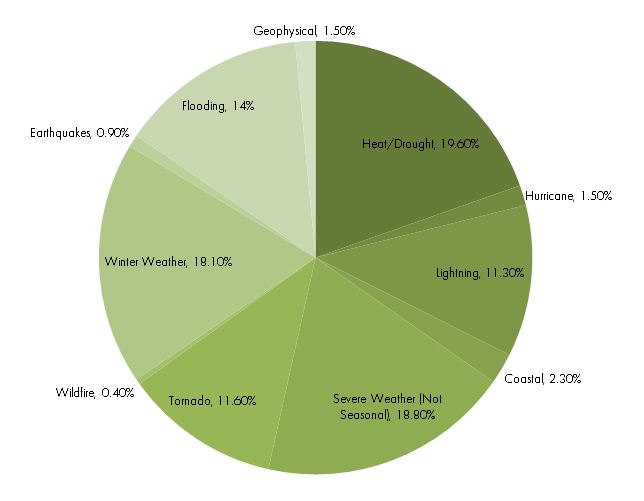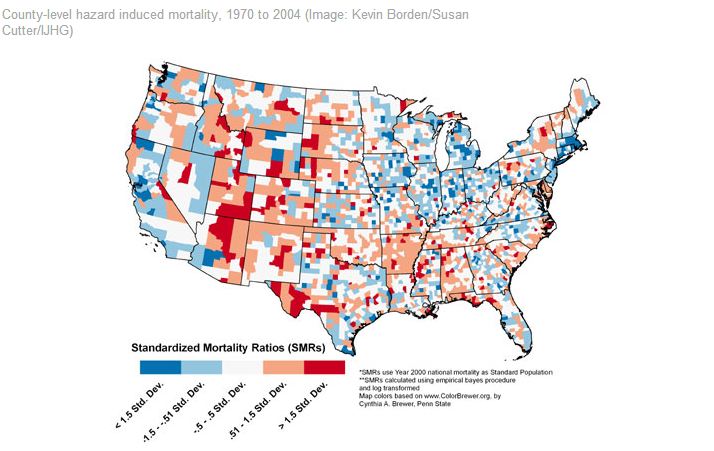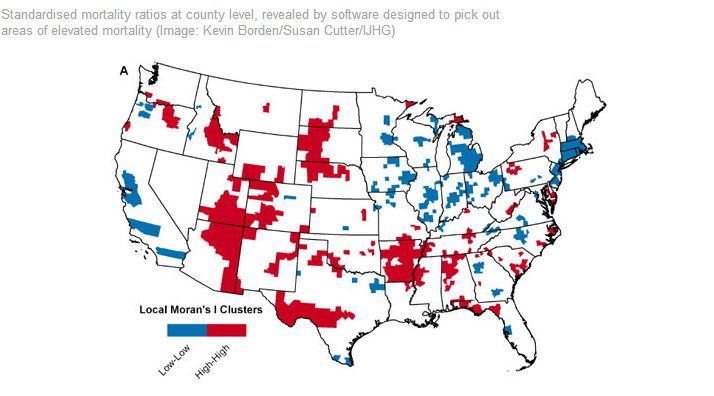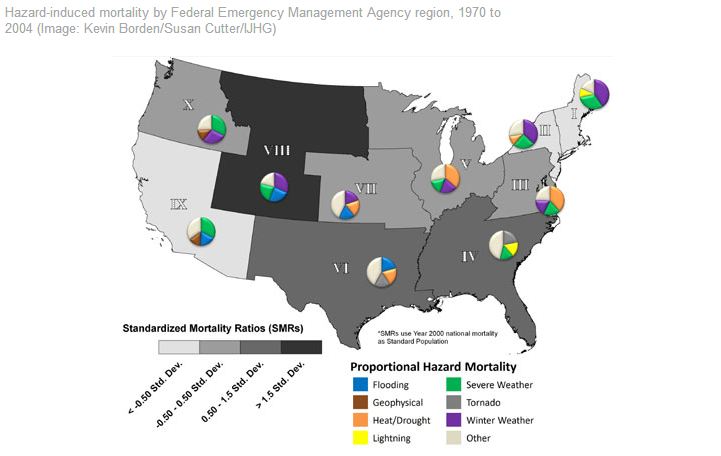For all of the press that hurricanes and earthquakes get in the news, they aren’t the most deadly natural disasters in the United States. Since 1970, hurricanes and tropical storms have accounted for less than 2% of deaths caused by weather.
Earthquakes only account for 2.5% while tornadoes only account for 11.6%. “There is considerable debate about which natural disaster is the most ‘deadly’,” researcher Susan L. Cutter wrote. “According to our results, the answer is heat.”  Surprisingly, severe weather such as heat waves, droughts, extreme colds and winter weather are attributed to the majority of the weather-related deaths. More than half (56.5%) of the deaths are attributed to these phenomena. Cutter and her research partner, Kevin A Borden, collected data about weather related deaths in the United States from 1970 to 2004.
Surprisingly, severe weather such as heat waves, droughts, extreme colds and winter weather are attributed to the majority of the weather-related deaths. More than half (56.5%) of the deaths are attributed to these phenomena. Cutter and her research partner, Kevin A Borden, collected data about weather related deaths in the United States from 1970 to 2004.
They plotted the data on a map and published their results. A first glance at the map would suggest that mortality rates are the highest in the mountain regions of the U.S. However, some of these areas seem to stand out because of their low population density.  While deaths can be high in that region, when compared against the population, weather mortality rates are the highest in the lower Mississippi Valley and upper Great Plains.
While deaths can be high in that region, when compared against the population, weather mortality rates are the highest in the lower Mississippi Valley and upper Great Plains.  On the east coast, heat and drought conditions account for the majority of weather-related deaths. Winter weather is a cause of concern in the northeast U.S. and the Rocky Mountain region.
On the east coast, heat and drought conditions account for the majority of weather-related deaths. Winter weather is a cause of concern in the northeast U.S. and the Rocky Mountain region.
Lightning-related deaths are the highest in the southeast U.S. Interestingly, weather-related deaths are least common on the west coast and Midwest and urbanized Northeast U.S.
 While Cutter and Borden’s research brings up a lot of interesting points, they also point out that it has some flaws. “Because of the lack of a standardized death classification scheme, hazard deaths are not counted in the same way for any two databases,” they wrote. “Rather, this work enables research and emergency management practitioners to examine hazard deaths through a geographic lens.
While Cutter and Borden’s research brings up a lot of interesting points, they also point out that it has some flaws. “Because of the lack of a standardized death classification scheme, hazard deaths are not counted in the same way for any two databases,” they wrote. “Rather, this work enables research and emergency management practitioners to examine hazard deaths through a geographic lens.
Using this as a tool to identify areas with higher than average hazard deaths can justify allocation of resources to these areas with the goal of reducing hazard deaths.”


















